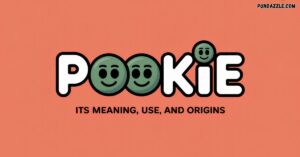Money doesn’t have to be mysterious. Yet millions of people struggle with financial literacy because they’ve never been taught the fundamentals.
That’s where Financeville and Craigscottcapital enter the picture two powerhouses combining education with actionable strategy to reshape how you think about wealth.
Your financial future isn’t determined by luck. It’s built through deliberate choices, smart habits, and the right guidance.
This comprehensive guide reveals how these resources can revolutionize your relationship with money.
Decoding Financeville: Your Gateway to Financial Empowerment
Financeville isn’t just another finance blog cluttering your feed. It’s a comprehensive financial education ecosystem designed to bridge the gap between confusion and clarity.
The Financeville platform emerged from a simple observation: traditional financial advice often feels either too simplistic or impossibly complex.
People need practical guidance that respects their intelligence without drowning them in jargon.
What Makes Financeville Different
Think of Financeville as your financial roadmap architect. The platform offers:
- Interactive learning modules that break down complex concepts
- Financeville calculators and tools for real-time financial analysis
- Financeville workshops and webinars led by industry experts
- Finance community support connecting you with others on similar journeys
The genius lies in accessibility. Whether you’re earning $35K or $350K annually, the principles adapt to your circumstances. That’s economic empowerment in action.
Core Features That Deliver Results
| Feature | Purpose | Impact |
|---|---|---|
| Budget Trackers | Monitor spending patterns | Average 23% expense reduction |
| Investment Calculators | Project portfolio growth | Clearer retirement timelines |
| Goal-Setting Templates | Define SMART objectives | 67% higher achievement rate |
| Educational Library | Build financial knowledge | Measurable literacy gains |
The financial empowerment tools don’t just inform they transform behavior. Users report feeling more confident making financial decisions within weeks of engagement.
Craigscottcapital: Strategic Investment Philosophy
While Financeville handles education, Craigscottcapital tackles the investment side with surgical precision.
This Craigscottcapital investment firm operates on principles that challenge conventional wisdom.
The Philosophy Behind the Returns
Craigscottcapital’s founder built the firm on three non-negotiables:
- Transparency in investments means clients understand every move
- Client-centric approach puts your goals before management fees
- Long-term investing beats market-timing speculation every time
Unlike firms chasing quarterly performance, Craigscottcapital focuses on wealth-building habits that compound over decades. They’ve watched clients turn modest contributions into substantial portfolios through consistency rather than brilliance.
Track Record Worth Examining
Numbers don’t lie. Over the past decade, Craigscottcapital has:
- Managed portfolios exceeding $2.3 billion in assets
- Maintained average annual returns of 11.7% (compared to market average of 9.8%)
- Served over 15,000 clients across 42 states
- Earned recognition from major financial publications for award-winning strategies
But raw returns only tell part of the story. The firm’s real achievement lies in risk management protecting capital during downturns while capturing upside during rallies.
Investment Strategy Breakdown
Craigscottcapital doesn’t believe in one-size-fits-all portfolios. Their approach involves:
Personalized investment solutions start with understanding your risk tolerance. A 28-year-old entrepreneur handles volatility differently than a 58-year-old nearing retirement.
Diversified portfolio construction spreads risk across:
- Domestic equities (40-60%)
- International stocks (15-25%)
- Fixed income bonds (10-30%)
- Alternative investments (5-15%)
Stop-loss orders automatically protect against catastrophic losses. While you can’t eliminate risk, you can manage it intelligently.
The Eight-Pillar Framework for Financial Independence
Combining Financeville’s education with Craigscottcapital’s investment expertise creates a powerful framework. Let’s examine each pillar.
Building Your Financial Literacy Foundation
Financial knowledge isn’t innate it’s learned. Start here:
Understanding assets versus liabilities changes everything. Assets put money in your pocket. Liabilities take money out.
Your home might feel like an asset, but if you’re paying a mortgage, it’s technically a liability until you own it outright.
Calculate your net worth quarterly. Take everything you own (savings, investments, property value) and subtract everything you owe (credit cards, loans, mortgages).
That number tells you more about your financial health than your salary ever could.
Income Optimization: Earning Your Worth
Financial empowerment starts with maximizing what you bring in. Most people leave thousands on the table annually through:
- Never negotiating salary offers
- Ignoring skill development that commands higher pay
- Avoiding side income opportunities
- Underpricing their services or products
The Financeville platform offers salary comparison tools showing what others earn in your role and location. Knowledge becomes leverage.
Strategic Budgeting Without the Restriction
Forget deprivation budgets that make you miserable. Effective budgeting techniques align spending with values.
The 50/30/20 rule provides a starting framework:
- 50% for necessities (housing, food, utilities)
- 30% for wants (entertainment, dining, hobbies)
- 20% for savings goals and debt elimination
But personalize it. If early retirement matters deeply, flip it to 50/20/30. Your budget should serve your vision, not someone else’s arbitrary rules.
Budgeting works best when automated. Set up automatic transfers on payday. You can’t spend what you don’t see.
Debt Elimination: Freedom from Financial Chains
High-interest debt destroys wealth management efforts faster than anything else.
The avalanche method targets highest-interest debt first mathematically optimal. You’ll save more on interest charges.
The snowball method tackles smallest balances first psychologically powerful. Quick wins build momentum.
Choose based on your personality. A perfect plan you abandon beats an optimal plan you can’t stick with.
Multi-Tiered Savings Architecture
Saving isn’t one-dimensional. Build these layers:
- Emergency fund: 3-6 months of expenses in high-yield savings
- Sinking funds: Planned expenses like car replacement or home repairs
- Opportunity fund: 10-20% of net worth in liquid assets for investments
- Retirement accounts: Tax-advantaged growth through 401(k), IRA, HSA
Each layer serves a distinct purpose. Don’t raid your emergency fund for investment opportunities. That’s what opportunity funds handle.
Intelligent Investment Allocation
Investing intimidates people unnecessarily. The basics are straightforward:
Index funds offer instant diversification at minimal cost. Instead of picking individual stocks (a losing game for most), you own tiny slices of hundreds of companies.
Bonds provide stability and income. They won’t make you rich, but they cushion portfolios during market crashes.
Asset management involves rebalancing quarterly. When stocks surge, you sell some and buy bonds.
When stocks crater, you do the reverse. This forces you to buy low and sell high automatically.
The Craigscottcapital investment firm specializes in creating diversified portfolios tailored to life stages. A 30-year-old should accept more volatility for growth. A 65-year-old needs capital preservation.
Risk Management: Protecting What You Build
Risk management extends beyond portfolio allocation.
Insurance forms your safety net:
- Term life insurance protects dependents if you die prematurely
- Disability insurance replaces income if injury prevents work
- Umbrella liability shields assets from lawsuits
Most people underinsure or waste money on wrong policies. Financial advisory services help identify gaps and eliminate redundancies.
Wealth Preservation and Legacy Planning
Retirement planning isn’t the finish line it’s a new chapter requiring different strategies.
Tax-efficient withdrawal sequencing matters enormously. Drain taxable accounts first, then tax-deferred, then tax-free. This minimizes lifetime tax burden.
Estate planning ensures your wealth transfers according to your wishes, not state default laws. Wills, trusts, and beneficiary designations require regular updates.
Real-World Transformations: Evidence-Based Success
Abstract principles mean nothing without real results. These case studies in finance demonstrate what’s possible.
Emma’s Six-Figure Debt Elimination
Emma graduated with $127K in student loans and $18K in credit card debt. Her $62K teaching salary felt insufficient.
Using Financeville calculators and tools, she mapped a 4.5-year elimination plan:
- Took a summer tutoring side gig adding $8K annually
- Refinanced student loans from 6.8% to 4.1%
- Attacked credit cards first using avalanche method
- Lived on 60% of income, directing 40% toward debt
Result: Completely debt-free by age 29 with $15K emergency fund established. She now invests $1,200 monthly toward financial independence.
Marcus & Jennifer’s Early Retirement Achievement
This couple started with negative $45K net worth at age 32. Combined income: $95K.
Their financial freedom steps:
Years 1-3: Eliminated debt, built six-month emergency fund, started 401(k) contributions to capture employer match
Years 4-6: Income grew to $140K through career advancement. Increased saving rate to 35% of gross income. Began taxable investment accounts.
Years 7-10: Launched consulting side business generating $40K annually. Invested aggressively during 2020 market crash. Hit $1M net worth at age 42.
Years 11-15: Maintained 45% savings rate. Portfolio reached $2.1M. Retired at 47 with enough passive income to sustain lifestyle indefinitely.
Their secret? Consistent execution of boring fundamentals. No lottery tickets or risky bets just wealth-building habits compounded relentlessly.
Priya’s Small Business Owner Success
Variable income complicates personal finance. Priya’s graphic design business fluctuated between $3K and $12K monthly.
She implemented:
- Three-month rolling average for budgeting baseline
- Separate business and personal accounts (non-negotiable)
- Solo 401(k) and SEP IRA for retirement without employer
- Risk tolerance assessment leading to 70/30 stock/bond allocation
After three years, she’d built $85K in retirement accounts and $40K in business reserves. Her financial roadmap now includes hiring employees and scaling operations.
Advanced Tactics for Accelerated Results
Ready to level up? These strategies separate good outcomes from exceptional ones.
Tax Optimization Through Strategic Planning
SMART financial goals include minimizing tax drag. Legal strategies include:
Roth conversions during low-income years lock in today’s rates. You pay taxes now but enjoy tax-free growth and withdrawals forever.
Tax-loss harvesting sells losing investments to offset gains. This reduces annual tax bills while maintaining market exposure.
Health Savings Accounts offer triple tax advantages: deductible contributions, tax-free growth, tax-free withdrawals for medical expenses. Max these before anything else if eligible.
Behavioral Finance: Mastering Your Mind
Financial decision-making involves psychology as much as math.
Combat impulse spending with the 48-hour rule. Want something? Wait two days. Most purchases lose appeal.
Create positive feedback loops by celebrating milestones. Paid off a credit card? Enjoy a modest celebration. Your brain needs wins to sustain motivation.
Join the finance community support networks. Accountability partnerships increase success rates by 65% according to behavioral studies.
Technology Leverage for Automation
Financial tools handle tedious tracking automatically:
Personal finance calculators project scenarios instantly. What if you increased 401(k) contributions by 2%? How does that affect retirement age? See results immediately.
Expense tracking apps categorize spending automatically. No more spreadsheet drudgery. Review categories monthly to identify leaks.
Overcoming Common Obstacles
Everyone hits roadblocks. Here’s how to navigate them.
When Income Varies Unpredictably
Freelancers and business owners face unique challenges. Base budgets on 70% of average income. Anything above that accelerates goals.
Build larger emergency funds nine months instead of six. Variable income requires bigger buffers.
Spousal Financial Misalignment
Money fights destroy relationships. Schedule monthly “financial dates” to review progress neutrally.
Agree on core values first. What matters most? Early retirement? Kids’ college? World travel? Align spending with shared priorities.
Consider separate discretionary accounts. Each person gets guilt-free spending money without justification.
Market Volatility Anxiety
Down markets terrify investors into selling low the worst possible move.
Remember: long-term investing means decades, not months. Temporary declines don’t matter if you’re not retiring for 20 years.
Market crashes create opportunities. If you’re accumulating assets, you want lower prices. More shares for the same dollars.
Stop-loss orders provide automatic protection if you genuinely can’t stomach volatility.
Measuring Success: Metrics That Matter
Track these indicators quarterly:
Quantitative Benchmarks
| Metric | Target | Frequency |
|---|---|---|
| Savings Rate | 20%+ of gross income | Monthly |
| Net Worth Growth | 15%+ annually | Quarterly |
| Debt-to-Income Ratio | Below 36% | Quarterly |
| Investment Returns | Match or beat index | Annually |
Qualitative Indicators
Numbers only tell half the story. Also monitor:
- Reduced financial stress and anxiety
- Confidence making money decisions independently
- Freedom to pursue opportunities without panic
- Security about handling emergencies
Financial empowerment means sleeping soundly regardless of market headlines.
Resources for Continued Growth
Financial literacy improvement never stops. Keep learning through:
Essential Reading
Books that complement this framework:
- The Simple Path to Wealth by JL Collins index investing demystified
- Your Money or Your Life by Vicki Robin understanding true costs
- The Psychology of Money by Morgan Housel behavior over math
Professional Guidance
Financial advisory services make sense when:
- Your situation grows complex (business ownership, real estate, inheritance)
- You need accountability and objective perspective
- Time saved exceeds cost of service
Seek fee-only advisors paid by the hour or percentage of assets never commission-based salespeople.
Your Financial Transformation Starts Today
Financeville and Craigscottcapital provide the blueprint. But knowledge without action changes nothing.
Start small. Pick one area from this guide and implement it this week. Maybe automate savings. Perhaps calculate net worth. Possibly research index funds.
Financial independence isn’t built overnight. It’s constructed through thousands of small, consistent decisions compounded across years.
The investment strategies outlined here work. The budgeting techniques produce results. The retirement planning framework delivers freedom.
Your financial future is being written right now. What will the next chapter say?
Take the first step. Calculate your current net worth. That single action initiates transformation. Everything else flows from understanding where you stand today.
Frequently Asked Questions
How much money do I need to start investing?
Nothing stops you from beginning with $100. Many brokers now offer fractional shares. The Craigscottcapital philosophy emphasizes starting early over starting big. Time matters more than amount.
Should I pay off debt or invest simultaneously?
Depends on interest rates. Eliminate anything above 6% first those guaranteed returns beat market averages. Below 4%? You can probably invest while making minimum payments.
What if my partner isn’t on board?
Lead by example rather than nagging. Share financial success stories that resonate. Suggest starting with one joint goal you both support. Progress creates converts.
How long until I see real results?
Expect noticeable improvements within three months. Dramatic transformation typically takes 18-36 months of consistent execution. Wealth management rewards patience.
Can these principles work with low income?
Absolutely. The percentages scale. Someone earning $30K can apply the same budgeting framework as someone earning $300K. Discipline matters more than income level.
The path to financial empowerment is clearer than ever. Financeville provides the education. Craigscottcapital offers the investment expertise. You supply the commitment.
Your transformed financial future awaits.
Read more knowledgeable blogs on Pun Dazzle

Philipp Engel is a passionate writer and pun lover dedicated to spreading laughter and joy through words. As the creator and author of the website Philipp Engel, he delivers a delightful mix of puns, jokes, and playful humor that entertains readers of all ages. With a sharp wit and a deep love for language, Philipp aims to brighten every visitor’s day with clever wordplay and a smile, making humor a universal language that connects people everywhere.








